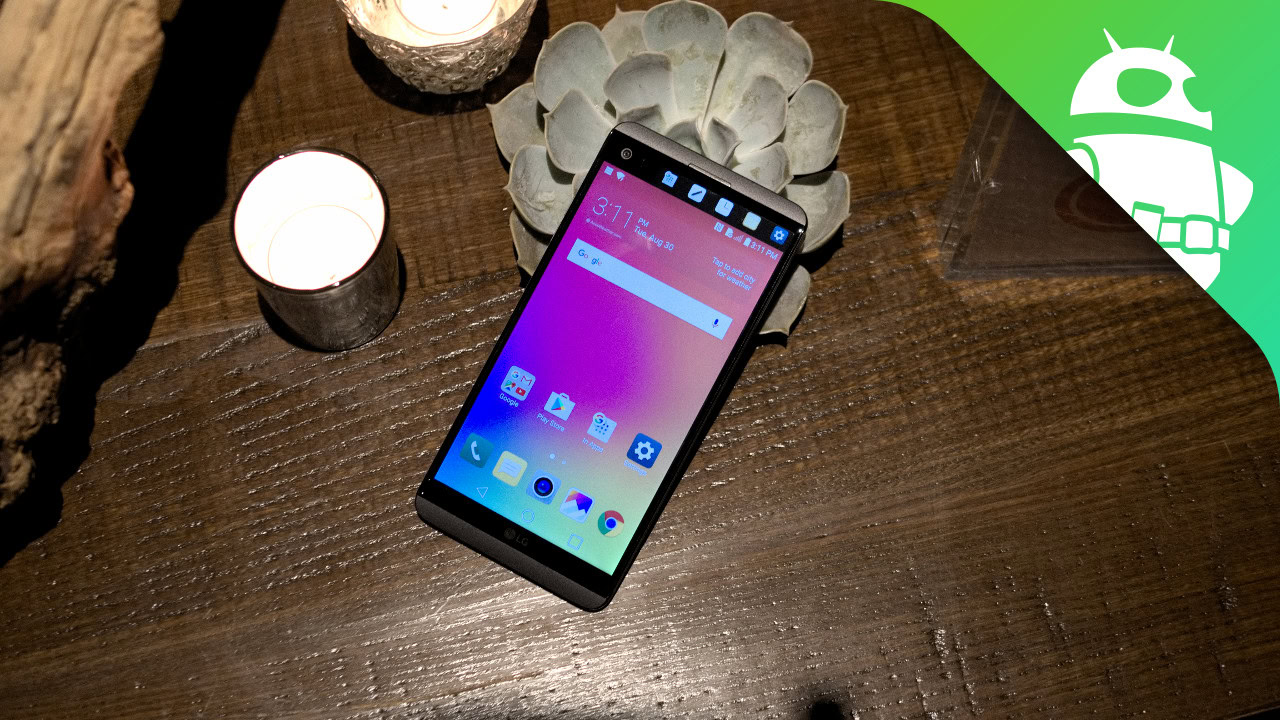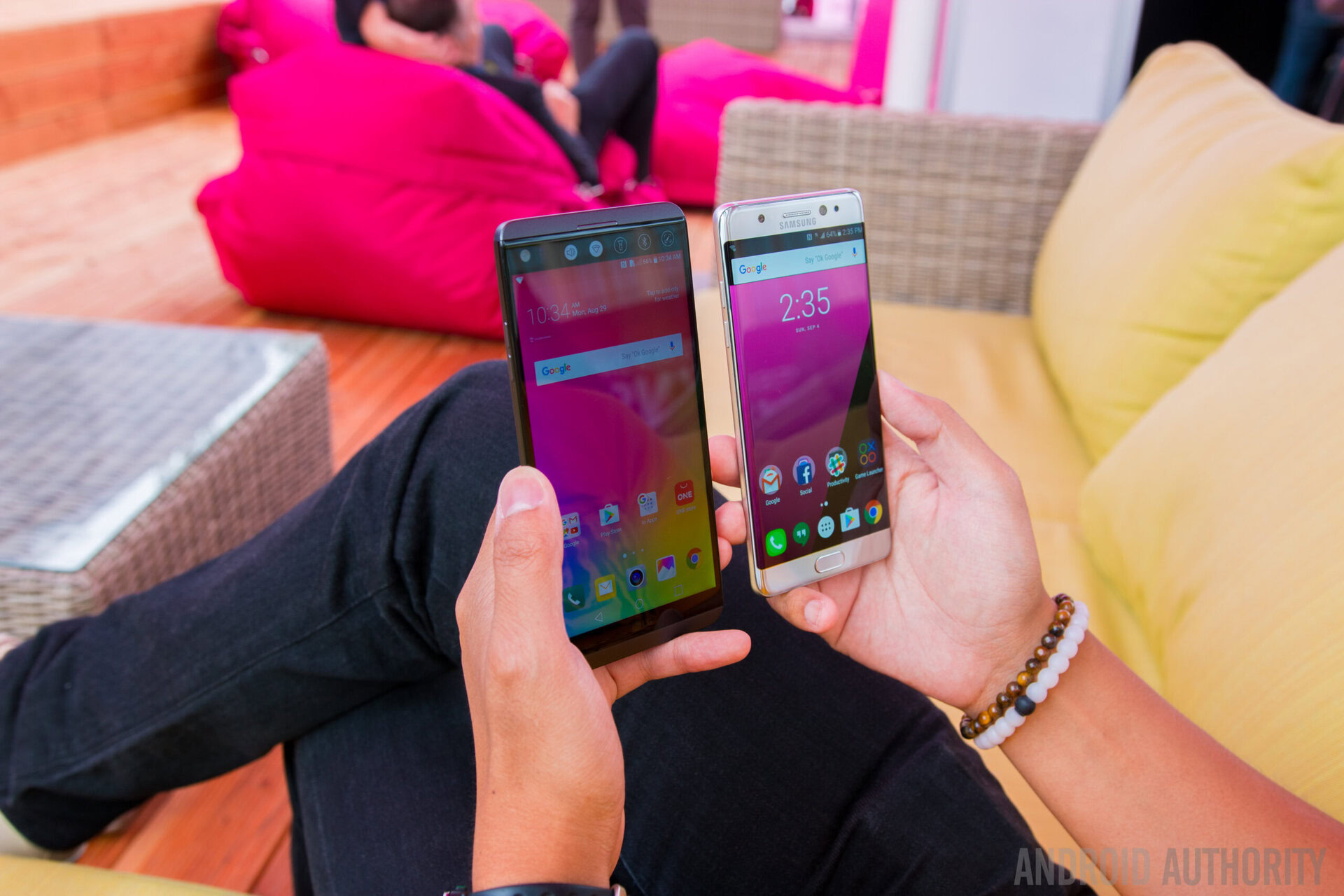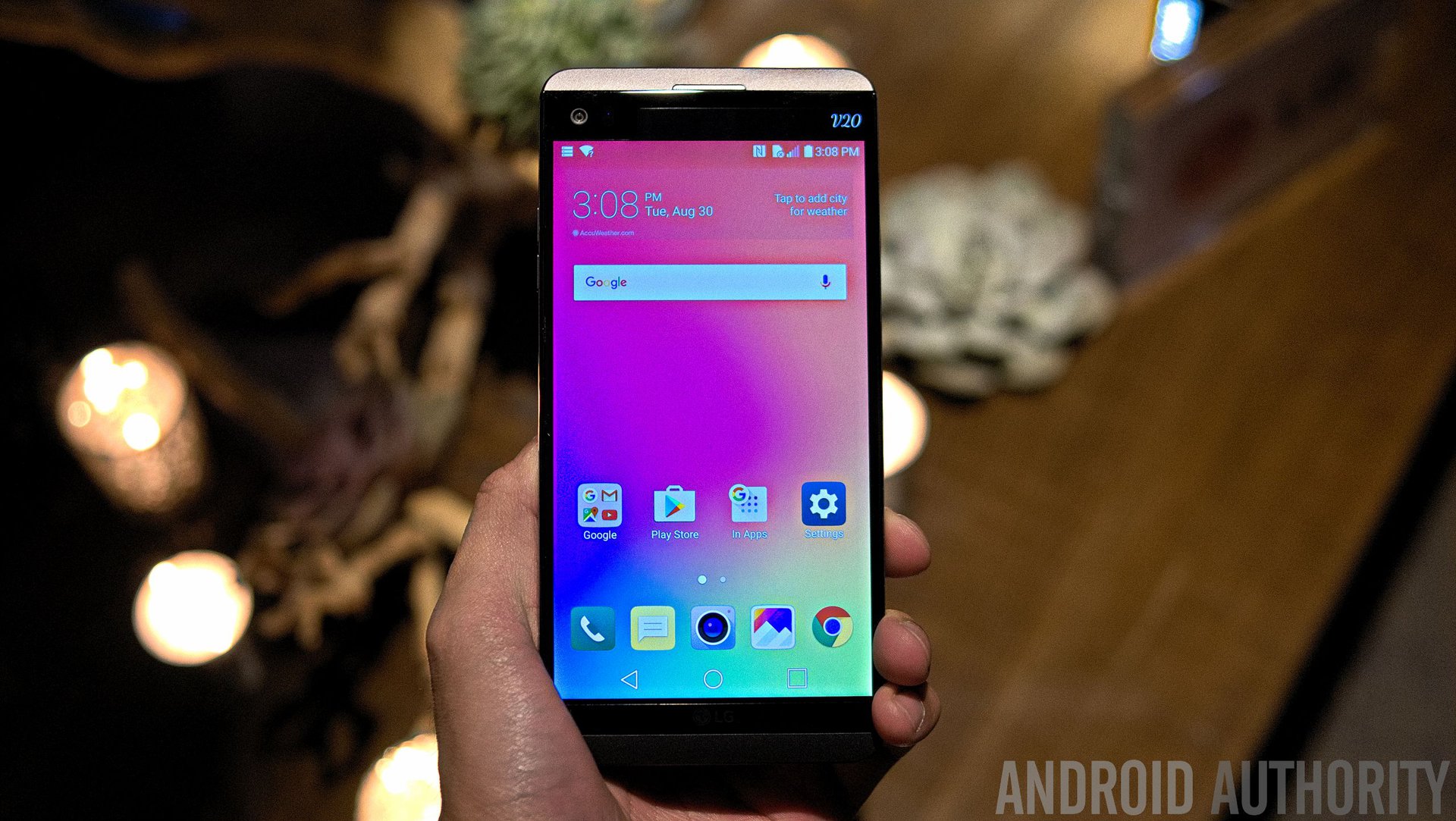Affiliate links on Android Authority may earn us a commission. Learn more.
LG V20, G5, Note 7, S7 Edge: Display Showdown
Published onSeptember 15, 2016

If you haven’t realized it, of late, we’ve been detailing the display section of our reviews a bit more than we’ve done in the past. Since we’re always trying to evolve our reviews process, we’re diving deeper into how we look at the displays in smartphones, by taking a deliberate path of uncovering their qualities using our new benchmark process. And with that in mind, we’re focusing our attention on the latest smartphone from LG – the multimedia powerhouse in the V20.
On paper, the LG V20’s display reads very much similar to its predecessor, but we all know that it’s unlikely that the same panel has been recycled. Yes, the V20’s 5.7-inch Quad HD IPS-LCD display with Gorilla Glass 4 is identical to specs found with the V10 last year, as well as the inclusion of its Second Screen, but the company was sure to mention that the Second Screen was brighter than before, going up to 68 nits from the former’s 35 nit reach. All of that is fine and dandy, but most of the attention will be place on the main display – so with that, we’re here to uncover what LG has crafted here with the V20.
This wouldn’t be a fair analysis, after all, if we have nothing else to compare its results against. And that’s why we’re also including the Samsung Galaxy S7, S7 edge, Note 7, and LG G5 into the mix, to see exactly how LG’s latest phone fairs against the competition.
It’s really bright, brighter than most
Right from the get-go, the V20’s display is notable for the sheer amount of luminance it’s able to muster up. Reaching a peak output of 714 nits, the display ensures that visibility isn’t compromised at all when viewing it outdoors – with the sun glaring down on it. In my experience, displays that produce 500+ nits tend to be usable under these conditions, so it’s swell to know that the V20 retains substantial visibility. That, of course, is something worth praising, just because not every phone is able to remain visible when it’s used in direct sunlight. Using them in the dark is one thing, but it’s totally another outside on a sunny day.
In that respect, the V20 earns some respect for being quite usable outdoors. Comparatively speaking, it’s definitely up there when compared to its esteemed rivals – namely the stuff from Samsung’s camp. Relying on a totally different display technology, Super AMOLED to be exact, the Galaxy S7, S7 edge, and Note 7 all produce some respectable levels at a little over 500 nits, well above other high-end phones, but none of them can achieve the same level of potency.
However, the LG G5 is just a smidgen better, but not by much at all. In fact, it tops out at 755 nits, besting the V20 in the process, but we wouldn’t say that it’s enough to make it significantly noticeable day-to-day.

Unbelievably cold color temperature
Right away, something becomes apparent the moment we start surfing the web on the V20. A keen eye is definitely needed to make it out, but as we stare at some of the white dead space while surfing through some sites, it’s quite telling that there’s a colder color temperature with the display here. The color white has a tinge of blue in it, indicating the obvious: that it’s an extremely cold panel.
In our testing, the IPS-LCD display reaches a color temperature of ~9100K, which is nowhere close to the “ideal” temperature of 6500K – indicating that it’s neither too warm or too cold. Unfortunately for the V20, it steers towards the colder side of the spectrum, making it one of the coldest displays I’ve come across dealing with high-end and flagship phones.
Ironically, AMOLEDs have been known to be exceptionally cold with their color temperatures, but in recent years, Samsung has perfected its own homemade Super AMOLED displays to be on par to those using LCD technology. In this scenario, all of Samsung’s recent smartphones exhibit color temperatures that are very close to the ideal level of 6500K.
All told, the V20’s display is just obnoxiously colder toned than most other things on the market right now.

Ouch, it’s poorly color calibrated
Things don’t get better for the V20’s ability to accurately reproduce colors in the sRGB color spectrum chart, where it just fails to hit the reference points within the boundary. Sad to say, it manages to hit only one single target, but fails miserably with everything else. Bringing your attention to its color gamut chart in the sRGB spectrum, you can see how all the colors are inaccurately produced.
Yellows seems to be influenced by greens, while magentas have a hint of blue in them. Even worse, the V20 can’t even properly recreate the color teal, which is arguably the easiest color to reproduce out of the bunch. Honestly, it’s pretty rare for a display to botch the color teal, but the V20 does exactly that – wherein teals creep into blue territory.
Now, it’s one thing to be overblown and saturated, but there’s no consistency to the V20’s color path. For those who are particular about color accuracy, the V20 is an unlikely candidate, due to how it just can’t produce realistic, true-to-life colors. Well, it definitely shows that the V20 follows after the G5, seeing that the two results are nearly identical.
Over on the AMOLED side, Samsung’s offerings are close to perfect as they come when it comes to color accuracy – albeit, you’ll need to set the display to basic mode. Under its adaptive mode, the phones tends to produce more saturation with colors, which is not a bad thing for some folks.
Conclusion
Going back to its specs, we have zero complaints about what we see on paper with the V20’s screen. Quad-HD resolution, check. Sizable screen, check. Second screen, that’s a nice addition. But even though it’s able to push out some serious luminance, the overall tone of the display is subdued. Some displays just have that iridescence and charm when we first peek at them, drawing us closer to inspect them even more. With the V20’s display, however, I didn’t find myself ogling or drooling over the screen – it just looked decent, almost blah in a way.
That, of course, could all be attributed to its poor color temperature and its inability to accurately produce colors realistically. While its luminance isn’t called into question at all, since it’s actually one of the more potent ones out there, the other two qualities I mentioned just limits its ability to be compelling – from a display standpoint, naturally. You might not feel the same way, but if you were to place it besides any of Samsung’s flagships, you’ll see exactly how its superior qualities makes for a mesmerizing display that gets more attention.
What are your thoughts? Shout them out in the comments.